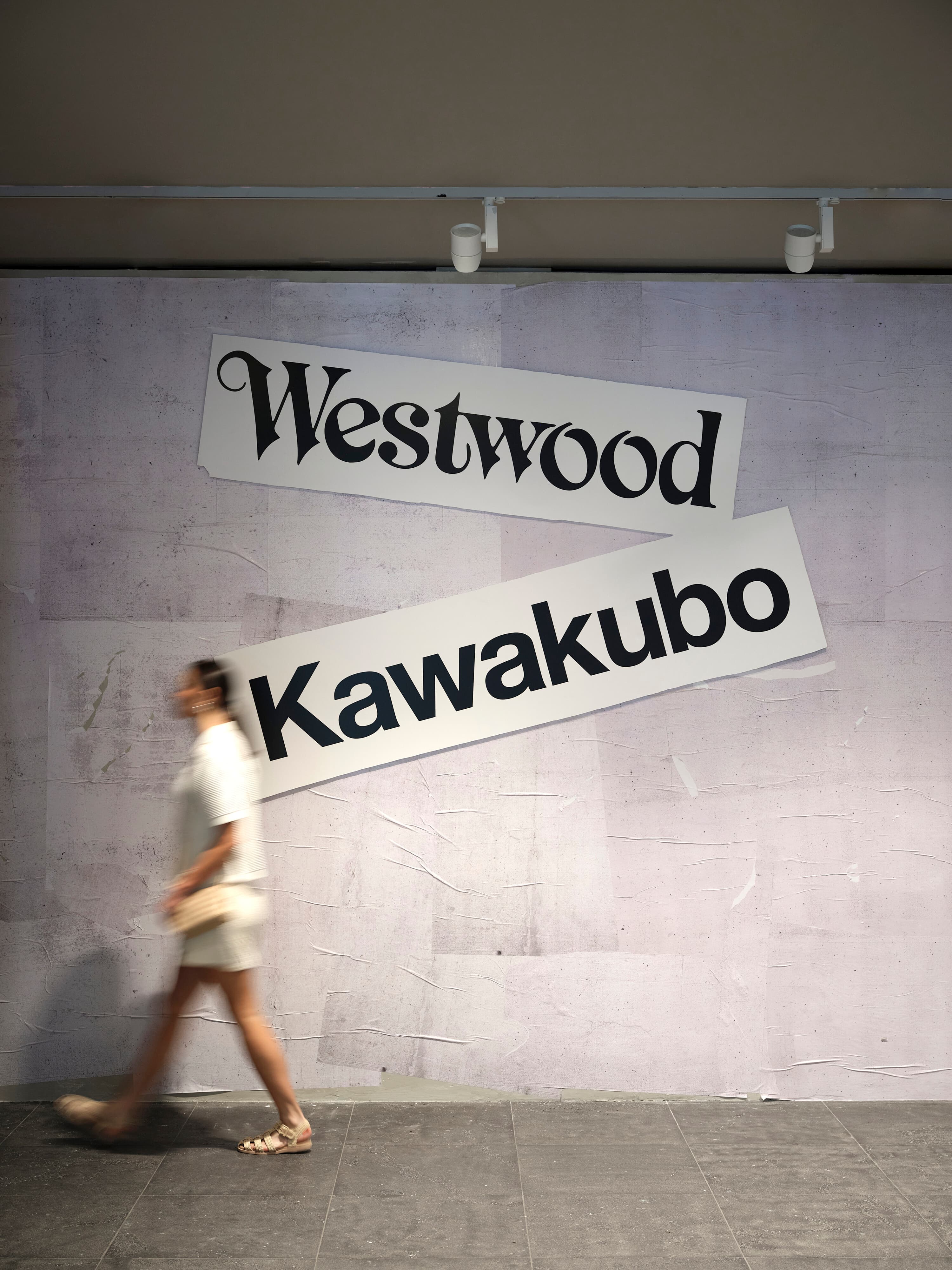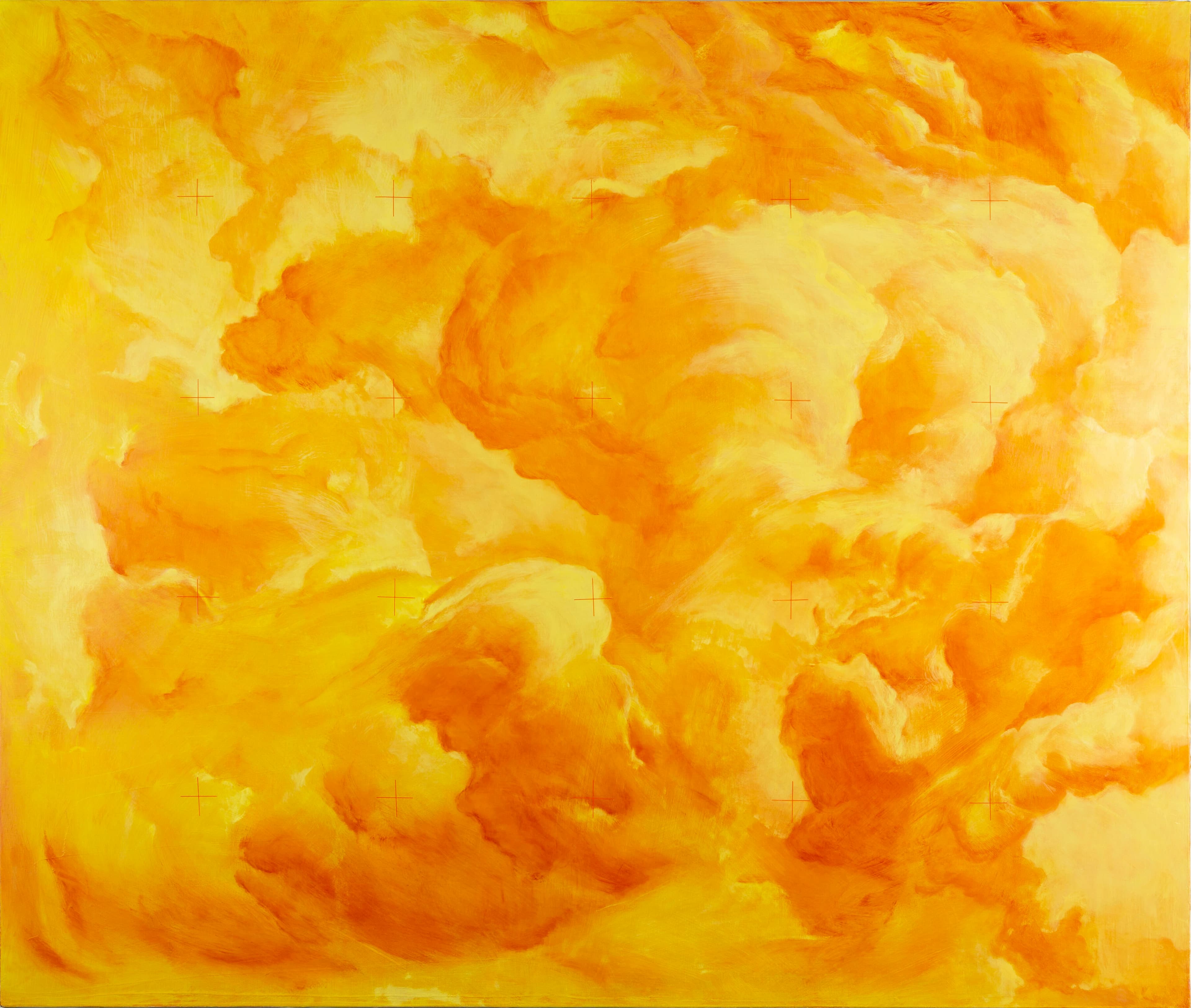Atelier Spiteri
Elizabeth Pulie
In 1903, author Samuel Butler declared that “every man’s work, whether it be literature, or music or pictures or architecture or anything else, is always a portrait of himself”. Despite the modernist, patriarchal origins of this quote, it may still be said that, while artists’ works alter in form and content over the course of their lifetime, the same concerns or questions tend to inform each instance of their expression.
In the era of conceptualism, artists challenged the perceived constraints upon that which define “art” as a concept, questioning the authority of institutions such as the museum, the market or the academy. These institutions help us to see art by separating it from not-art, from that which exists in the world, outside the institution. As described by theorist Lucy Lippard, this challenge took place in conceptual art primarily via art’s dematerialisation, the consideration of art less as an object and more as an idea. By placing the concept “art” within contexts less recognisable as art, frequently by allowing it to disappear into the invisible or the everyday, artists aimed to negate the necessity of these institutions and the power they held over what art is, or could be. It may be said that “the artist” is another of art’s institutions: that something must be made by an artist if it is to be considered art at all. During and after the era of conceptualism, challenges to the institution of the artist have been made via collaborative approaches to art-making (exemplified by the rise of the artist group or collective) as well as the turn to art as social practice. The failure of the conceptual project to fully escape art’s institutions has meant that, among other things, the tendency to celebrate the artist as authority remains.
Sydney artist John Spiteri’s current exhibition at Sarah Cottier Gallery represents a certain dealing with identity, less in relation to “identity art”, or intersectionality, and more in relation to the identity of art itself. Contrary to the charge of subjectivity a focus on self might normally engender, the almost excessively literal depiction of “the artist” in Spiteri’s work lends instead a sense of irony, an objectivity or distance that allows for, I would argue, a certain critique. The fact of my close friendship with John and our mutual representation by Sarah Cottier Gallery could indicate an alignment in our views concerning art: while this is certainly the case, my own engagement with art as theory or discourse alongside that of my studio practice lends this review itself a degree of subjectivity, the ideas contained within an expression or incidence of my own work as an artist. As a way of instrumentalising Butler’s sense that “every (wo)man’s work … is always a portrait of (her)self”, the following discussion leverages my own endeavours to elucidate another artist’s work.
Atelier Spiteri (2022), the artist’s largest painting to date, dominates a wall of the gallery’s second space, the sole object in an exhibition of the same name. Dramatically lit in an otherwise darkened room, the painting looms toward visitors as if from a grotto or altar, a fittingly worshipful context for reflection upon a work of such dimensions. The reverential installation of this painting, the title’s almost unseemly focus on the artist’s name and the romantic allusion to his “atelier” all combine in a sense of parody, the exaggerated references to art’s institutions allowing for a quoting of art as a concept, and a sense of objectivity concerning art as subject.
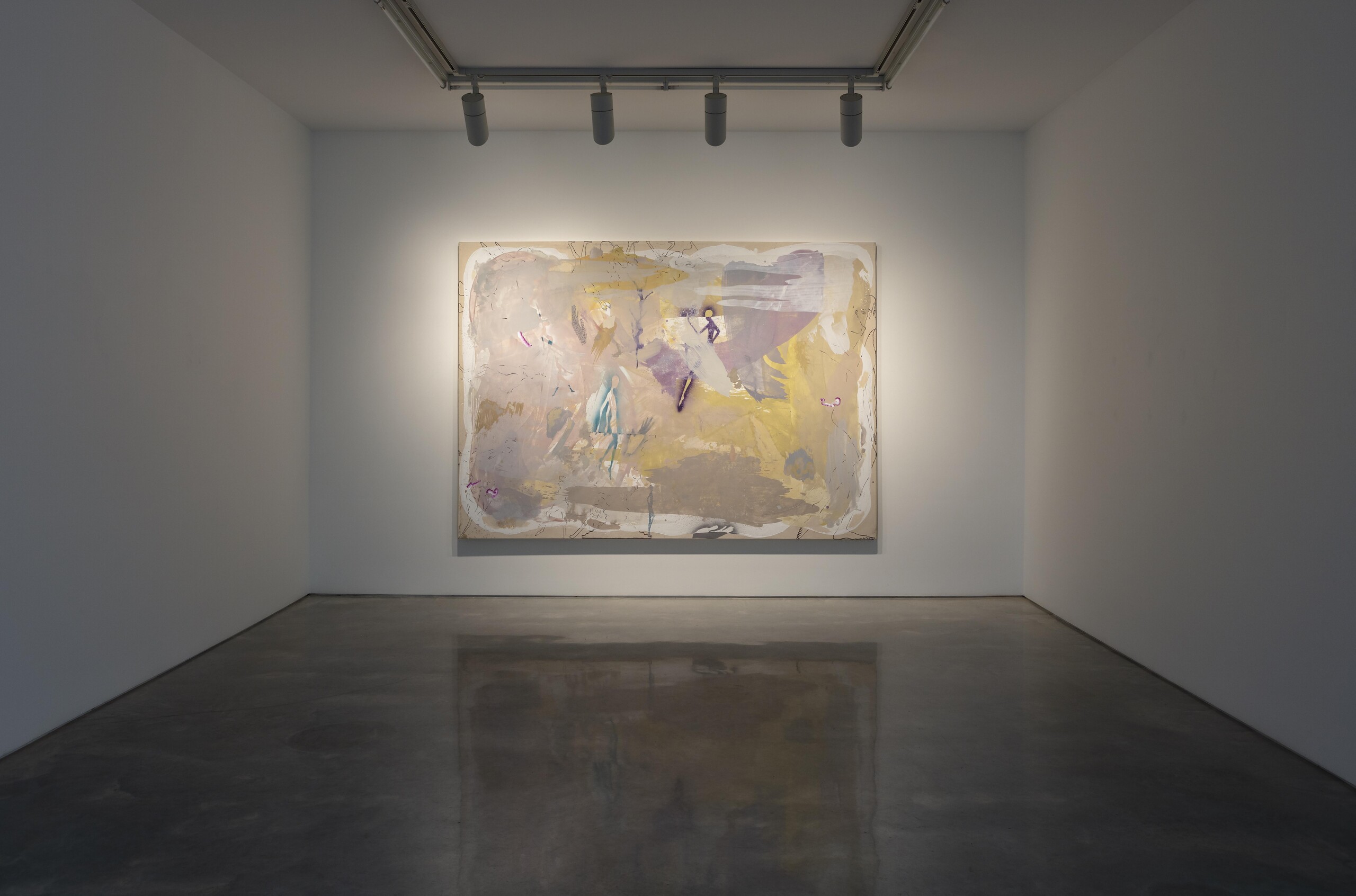
In contrast to this overwrought installation, however, my initial impression of the painting itself is of something quite beautiful, even tasteful. Swathes of paint in neutral and pastel tones are layered upon an exposed canvas ground; thick, sometimes cracking, impasto swipes are juxtaposed with thin washes, rubbings and scratches. Directional brushstrokes of gestural intent contrast with organic fluids and spills, many appearing painted over as if to clean them up. Much material beauty is to be found in this work’s hasty marks, its corrections and erased scribbles, the play of accident and intent lending a sense of origins, of the natural or primordial world. Upon closer inspection, however, there is a great deal more to this work. Stencilled within the painting’s central plane, elongated figures and disembodied hands float through space; seemingly controlled by unseen forces, they are submerged within and dissected by the painted layers.

Larger, more purposeful figures inhabit the work’s inbuilt “frame” of exposed canvas, their hands and feet connecting with the stretcher’s outer edge. Standing, sitting or crouching, these bodies variously negotiate the work’s boundaries, one traversing a corner on all fours, another gesturing with pointed toe. In conversation with Spiteri, it was revealed to me that these figures reference the artist himself: not so much self-portraits, but rather “versions” of him.
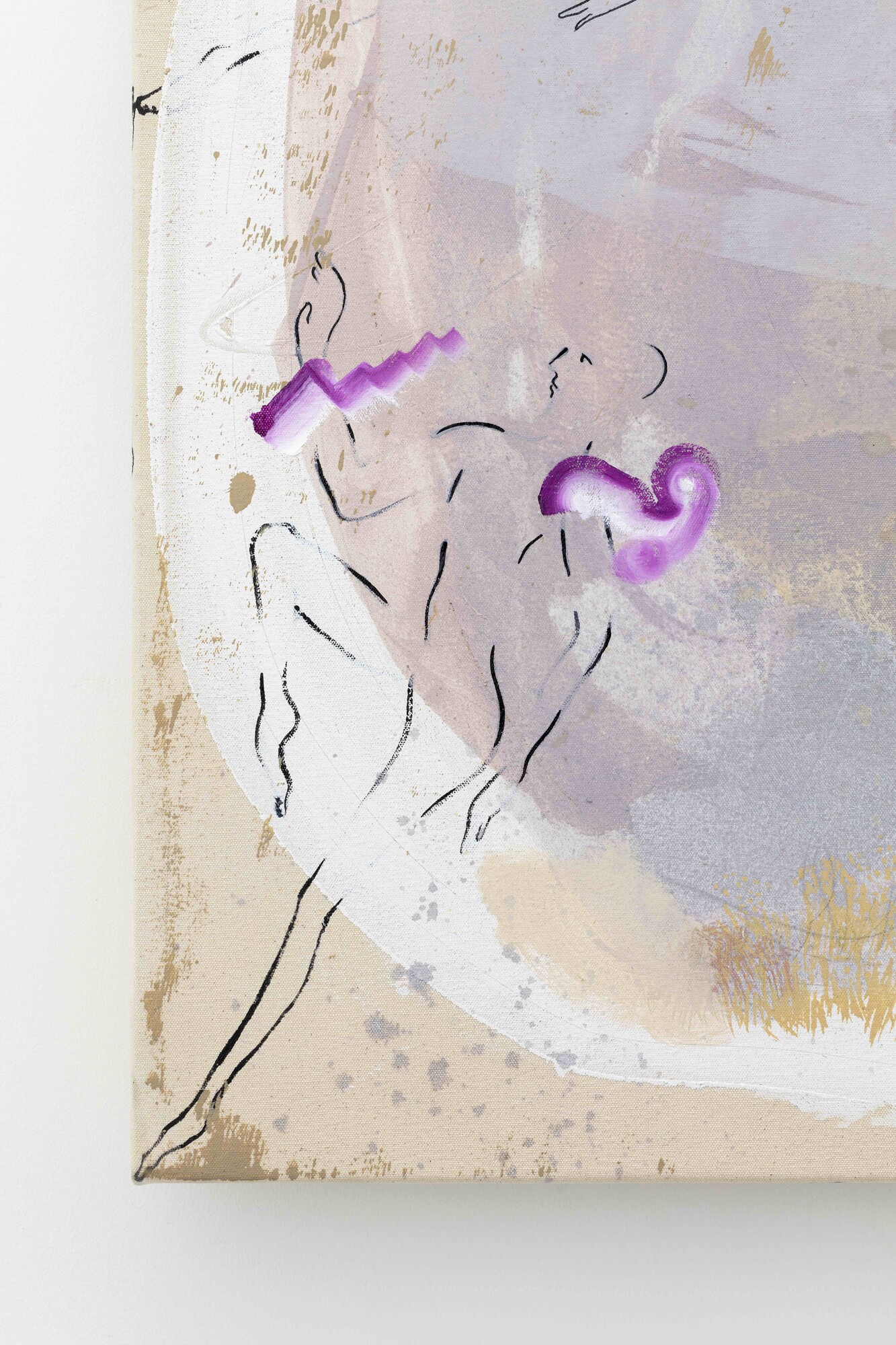
As well as the aforementioned figures, Atelier Spiteri depicts an almost life-sized body. Pressed hard up against the painting’s impenetrable right-hand edge, the figure is trapped within its boundary. Only one hand succeeds in making a small inroad at escape, breaking with the picture-plane and wrapping around the side, simultaneously covering the artist’s face. This figure’s gestures towards cover and escape suggest a certain vulnerability, a desire to not be seen. We might question what it is the artist is trying to flee here: is it the picture-plane, or painting itself? His identity as an artist? The fact that he has to make work at all? A sense of anxiety accompanies much of Spiteri’s work, and this painting is no exception.
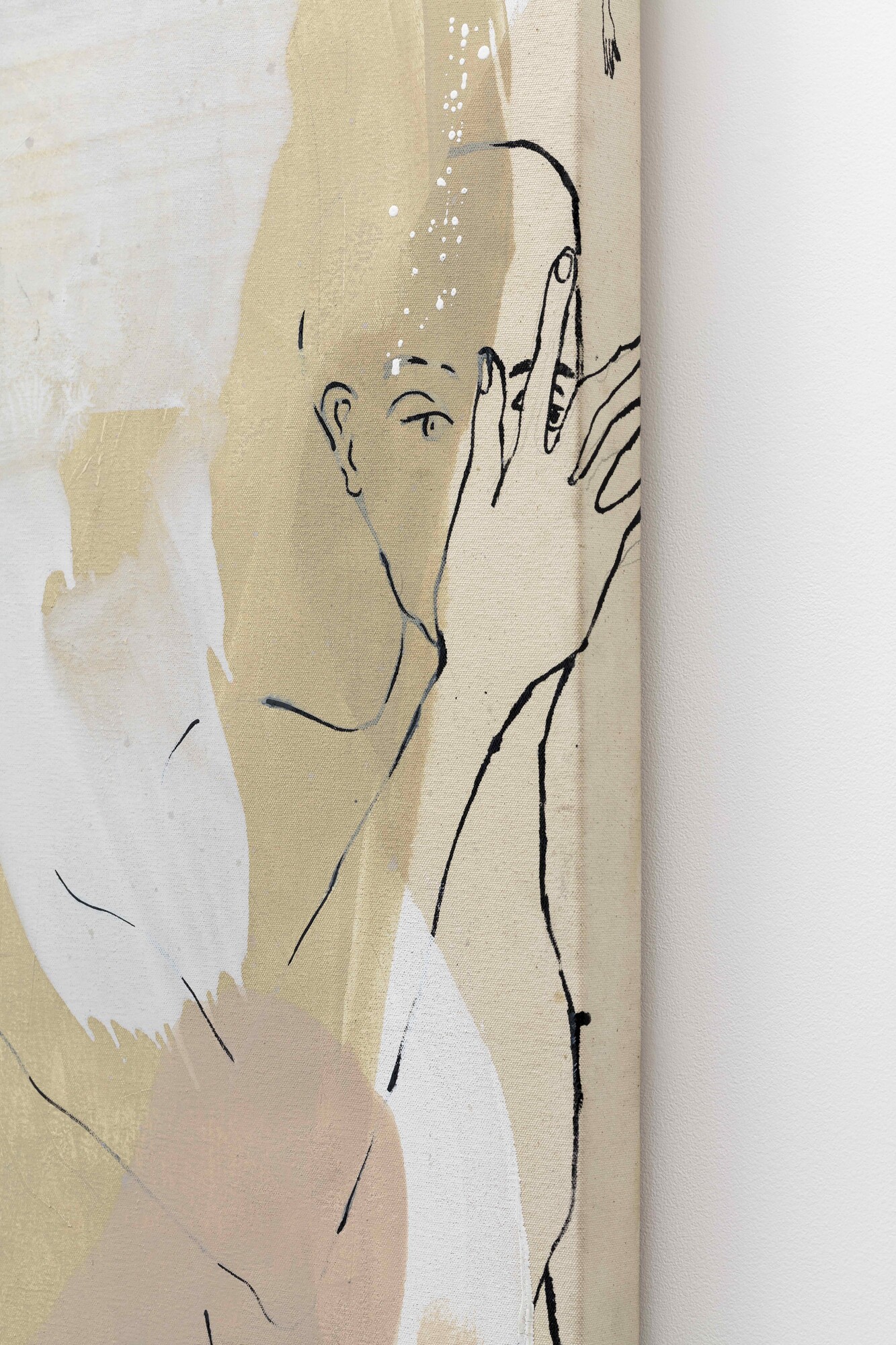
Spiteri has long engaged with the edges of his paintings, the exposed canvas side so often hidden by conventional framing. His intentional treatment of his paintings’ edges emphasise their object-ness: the fact that paintings are, in the end, objects within the world as much as they are windows onto the world. This pointing towards the painting as object is only one example of the artist’s tendency to deliver observations about the nature of art. In Atelier Spiteri, as with his other works, overt references are made to formal painting concerns such as figure and ground, or representation versus abstraction. There is nothing oblique in his highlighting of the edge of the painting, in his use of cartoons to render his figures, his romantic reference to the artist’s “atelier”. This detached attitude, his tendency to quote painting as such, draws attention to the medium’s dated pathos while remaining firmly entrenched within it. Humorously critical, this reveals painting—and, by extension perhaps, ‘art’ itself—the subject of Spiteri’s work. Columns of vomit emojis appear on the painting’s lower side-edges. Stencilled beneath and supporting tiny figures’ feet, these emojis are only visible if one walks around the painting, to apprehend it as an object. The emojis represent the artist’s feelings about the process of painting: the difficulty of making a work, the almost visceral reaction one might feel towards having made a wrong move or gesture.
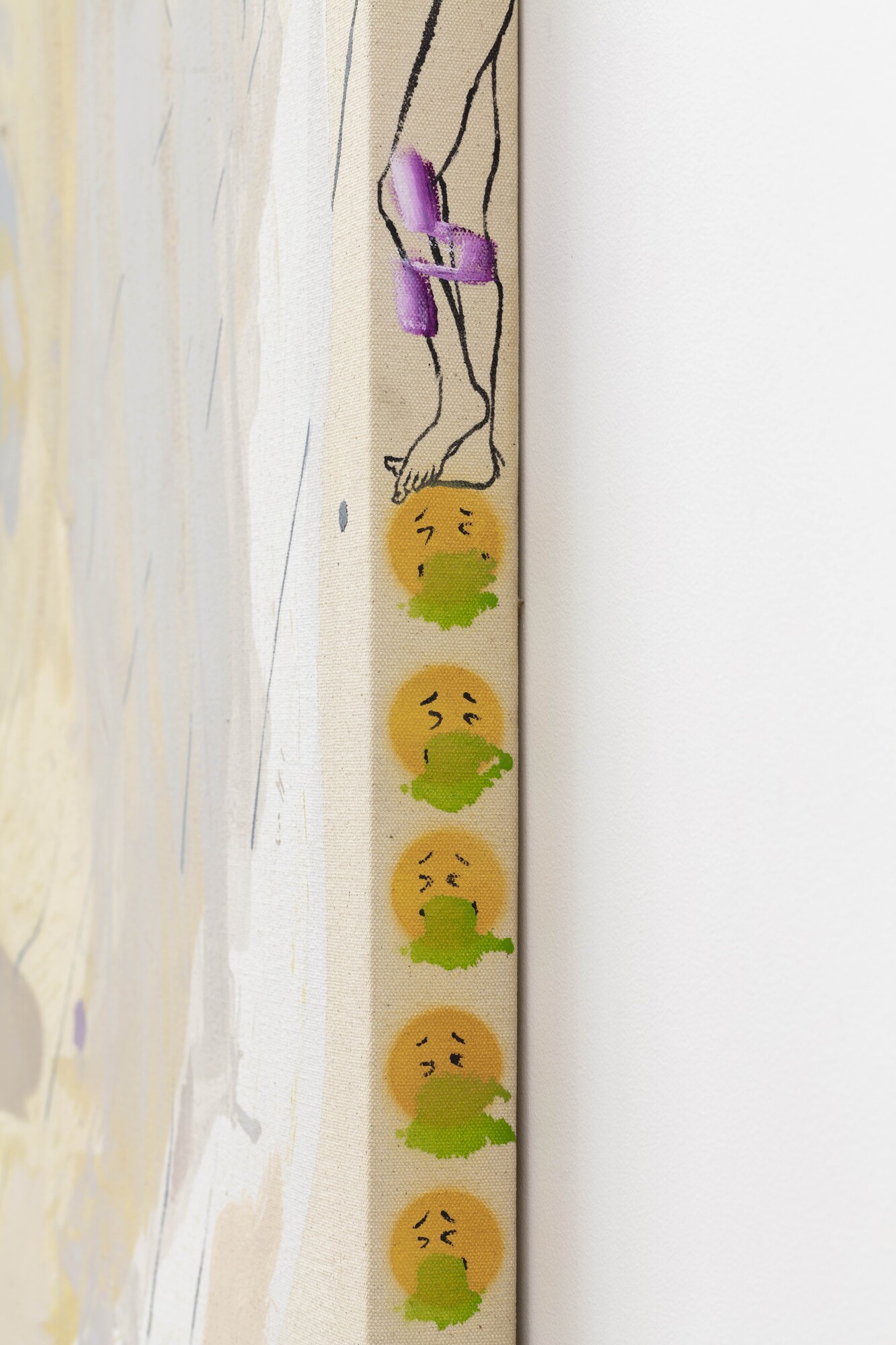
It is, finally, this sense of failure that appears most clearly to me in Atelier Spiteri, and which draws me back to conceptual art’s failed attempt to escape its institutions. The art of the current moment, post-conceptual art, can be understood as a reckoning with this failure. When art as object gave way to art as concept, it become possible for any form—including an entire lack of form—to be acceptable as art. This renders any escape from “art”, to inhabit the outside of art, via form, impossible. Artists today are constrained in their ability to practice critically or objectively, to make work about art, because there is no outside to art as form. Our acceptance of modernism’s end is an acceptance of the end of the artist’s ability to critique art via art.
In Atelier Spiteri, the gestures to art as both subject and object—the pointing at corners, the dealings with the edge, the objectification of the artist—seem an attempt to deal with what art is, a critique of art’s nature, via art, at a time when this is no longer possible. In her 1997 essay, “Escape Attempts”, theorist Lucy Lippard claimed that after the era of conceptualism, “art was recaptured and sent back to its white cell”. Lippard flags here a resignation on the part of artists, a grudging conformity to art’s institutions in light of the impossibility of escape. Despite, or perhaps because of, its obvious symbology, Atelier Spiteri appears as an embodiment of this resignation—nowhere more clearly than the vomit emojis. Impotently expressing their disgust, they are barely visible until we walk around the work and consider its boundaries: its entrapment in the object, in the white cell of the gallery, in the identity of the artist. In its anxiety and impotence, this painting reflects back to us the nature of art in the current moment. No longer able to critique art from outside, our best possible reaction may be to point at it, in a somewhat covert, childish rage.
Elizabeth Pulie is an artist based in Sydney. She is represented by Sarah Cottier Gallery and lectures at the National Art School, Sydney
